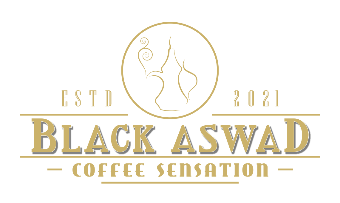
Italian Roast Coffee: Why Try This Specialty Premium Coffee?
Share
The Italian Roast is all about how the coffee is roasted, regardless of where it is grown or produced. The same continents—Africa, Asia, and Latin America—where coffee is grown are where the beans originate.
Read on to learn about Italian roast coffee and where to find a roasted coffee online subscription if you want one.
What is Italian Roast Coffee?
Italian roast coffee is a distinctively dark roast that is popular with coffee drinkers worldwide. It is characterized by its smoky and bitter flavor profile and dark, almost burnt-looking color.
The name "Italian roast" originates in Italy, where it has been a popular style of coffee for centuries.
Italian roasted coffee beans are typically made using beans that have been dark roasted until they are almost black. This roast level is the darkest and creates a very intense flavor.
Compared to milder roast levels, the beans are roasted for a longer time—often several minutes longer. As a result, the beans release more oils and acids during roasting, giving off a stronger, more potent flavor.
Due to its intense flavor profile, Italian roast coffee is often used in espresso-based drinks such as cappuccino and latte.
The bold flavor of the coffee helps to cut through the creamy texture of the milk and creates a more balanced flavor. It is also often used in traditional Italian coffee drinks such as the macchiato and ristretto.
Italian roast coffee is popular with coffee drinkers worldwide due to its intense flavor and ability to stand up to the addition of milk, sugar, and other flavors. It is a great choice for those looking for a bold, intense cup of coffee.
How Is Italian Roast Coffee Made?
First, the roasting process for coffee with an Italian roast.
Towards the roasting range, Italian Roast is unquestionably on the darker end.
Italian roast beans are fairly oily due to the dark roasting process. Why? Check out my post on oily coffee beans for more information.
The appearance of an Italian roast coffee and a French roast is fairly comparable. black and greasy. Italian roast coffees are lighter in color than French ones because they are not as intensely roasted.
In any case, prepare for the boldness of the traditional dark Roast, which many people prefer.
How Much Caffeine Is In Italian Roast Coffee?
Technically speaking, because an Italian roast is a darker roast than a lighter roast, it will have slightly less caffeine. The extended roasting procedure, which causes some of the caffeine to evaporate and produce gas, is to blame for this.
Is the difference noteworthy? No, not really. Of course, coffee has a lot of caffeine, regardless of the Roast you choose, unless it's decaf.
The amount of caffeine in coffee is mostly affected by how it is brewed, the type of bean used, and how finely the coffee is ground.
The quantity of caffeine in the beverage will inevitably grow as more coffee grounds are added.
What Is The Flavor of An Italian Roast?
The Italian Roast, according to some, is only lightly roasted enough to maintain the fruity, natural aspects of the coffee that are kept with a medium roast while still providing you with the bitter coffee flavor of a dark roast.
An Italian roast is normally extremely far right on the light-to-dark spectrum scale, so be prepared for the smoky, roasty kind of coffee flavor you would expect from something effectively charred on the surface just short of completely burning the beans.
Conclusion
The longer roasting time gives the beans a deep and smoky flavor, which is perfect for those who enjoy bolder coffees. Italian Roast Coffee can be served as espresso or drip coffee, making it a versatile drink to enjoy. No matter how you enjoy it, Italian Roast Coffee will surely add a unique and bold flavor to your day.
Shop at Black Aswad if you want the greatest flavored coffee. Every cup of our specialty-grade, freshly roasted, healthy coffee is excellent! Shop Italian roast coffee today!
